Syn.: Spiraea crenifolia C. A. Mey. γ mongolica Maxim., Spiraea mongolica Maxim., Spiraea gemmata Zabel, Spiraea ferganensis Pojark., Spiraea lycioides Parker, Spiraea uratensis Franch.
Higher classification: Family Rosaceae, subfamily Spiraeoideae, genus Spiraea, section Chamaedryon (traditional but not monophyletic group)
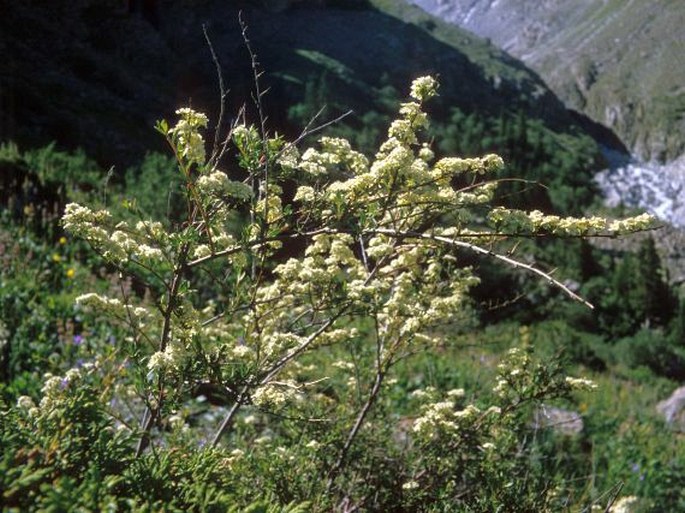
Distribution: Dsungaro-Tarbagatai, Tian Shan, Pamir-Alaj, Hindukush, Karakorum, the northwest Himalayas, the Qinghai-Tibetan Plateau including southeastern mountain ranges and adjacent mountains towards north-central China; probably overlaps the southernmost Mongolia.
Ecology: Open mountain forests and biotopes of the lower part of the high mountain zone such as sparse shrubby-grassy slopes, dry alpine meadows or pastures, open stony places with mountain steppe vegetation; generally from 1500 to 4000 m in dependence on local belts of vegetation.
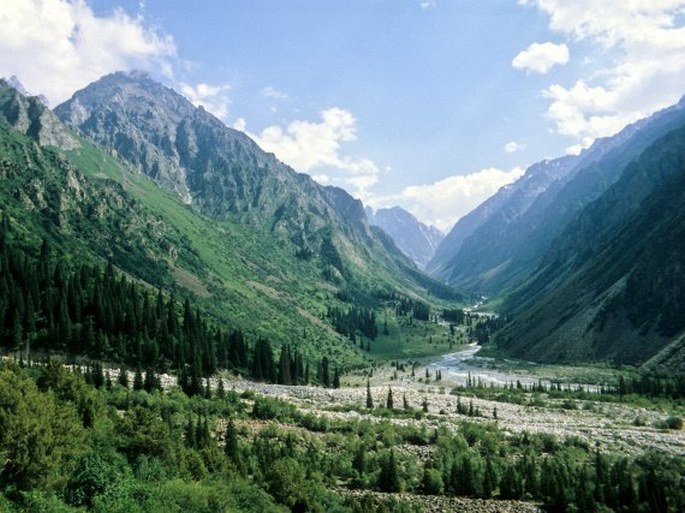
Description: Shrub 1–2.5 m high; shoots angled, relatively long, slender and almost straight, glabrous to densely tomentose (in var. villosa); fully developed buds 2–5 mm long, longer than leaf petiole, with two exposed acuminate scales. Leaf blades on sterile shoots narrowly elliptic or narrowly oblong, obtuse or acute, entire or rarely with a few teeth near apex, 8–25(–30) × 2–6(–10) mm, narrowly cuneate at the base and tapering in a short petiole, glabrous, pubescent to tomentose (in var. villosa) on both surfaces. Inflorescences lateral on shoots from the previous year, forming 6–15-flowered usually simple corymbs on short leafy peduncles, together 2–8 cm long; pedicels 2–10(–18) mm long, one-flowered or the lower rarely branched. Flowers in May to July, bisexual, 5–8(–12) mm in diameter; sepals triangular, 1–2 mm long; petals white, broadly obovate, 2–4(–5) mm long; stamens 2–4 mm long. Follicles 2.5–4.5 mm long, usually pubescent to villous, with styles prolonging the dorsal suture.
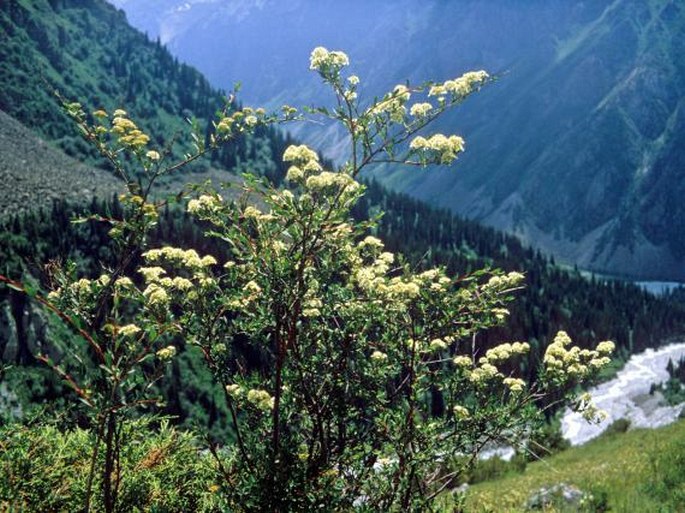
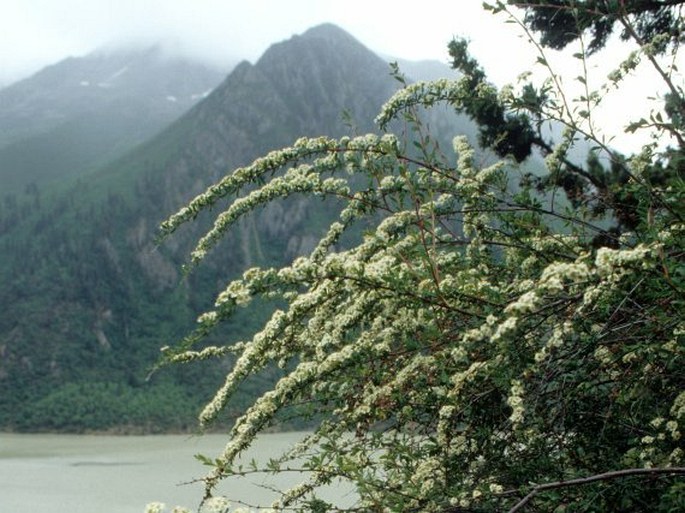
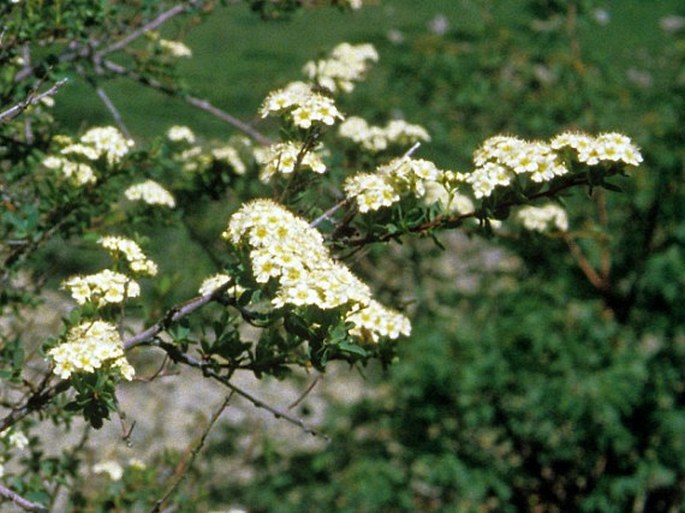
Taxonomic history: Spiraea lasiocarpa was described by Karelin and Kiriloff in 1842 from the Sarkhan River basin in the Dzhungarskij Ala-Too Mountains in today Kazakhstan and up to 2002 reported from Tien Shan and Pamir-Alaj mountain systems in the territory of the former Soviet Union, mainly Kazakhstan and Kyrgyzstan of this times, and also from eastern Afghanistan, northern Pakistan and Jammu and Kashmir in India. Around the turn of the 20th and 21th century, it was revealed by comparison of original collections that this species is conspecific with the taxon described by Maximowicz in 1879 on the basis of plants collected by Przewalsky in the today Chinese autonomous region Nei Mongol (from the Yin Shan Mountains northwest of Baotou) at first in the rank of variety and two years later by the same author as a separate species under the name Spiraea mongolica, accepted afterwards only in Chinese botanical publications. In a special taxonomic study published recently (Businský in Phyton, Annales Rei Botanicae, 55, 1, 2015, p. 69–120) additional two taxa were united with Spiraea lasiocarpa as its taxonomic synonyms: Spiraea ferganensis, described in 1939 from the small area around the border of Uzbekistan and Kyrgyzstan, and Spiraea uratensis described in 1883 also from the today Chinese Nei Mongol. In the same study, an interesting hybrid complex between Spiraea lasiocarpa and Spiraea canescens D. Don was described as Spiraea ×transhimalaica Businský from the south-central part of interior Tibet (Xizang). This hybrid taxon occupies a relative large area of distribution and exhibits wide range of variation because their parents are relatively morphologically distant as they belong to different sections according to the traditional, not phylogenetic concept of infrageneric classification. This hybrid taxon had been confused by Chinese botanist with Spiraea mollifolia Rehder, which is distributed further to the east.
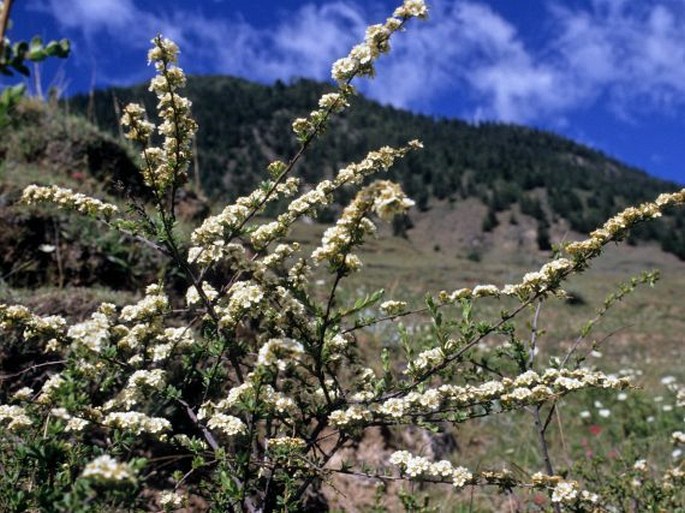
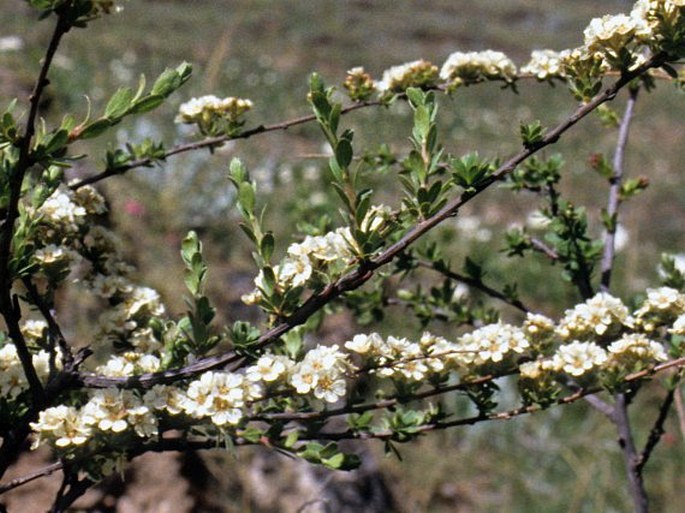
Infraspecific taxa: Two taxa were described as varieties from Spiraea mongolica, i.e., S. mongolica var. tomentulosa T. T. Yu in 1963 and S. mongolica var. pubescens Y. Z. Zhao et T. J. Wang in 2000, both falling into the range of usual variation of Spiraea lasiocarpa. According to the current knowledge, the only justified infraspecific taxon is Spiraea lasiocarpa var. villosa Businský, described in 2011 from the Garze Prefecture in western Sichuan as a generally villous-tomentose taxon forming populations along the southeastern margin of the species’ distribution area.
Use: This species has a potential as an ornamental shrub in horticulture and thus it is suitable for introduction into culture as a fully frost-resistant shrub attractive during flowering time. However, it is still missing in horticulture but is cultivated in some botanical gardens, originally perhaps only in the former Soviet Union, from where it could have been sent abroad via seeds exchange.
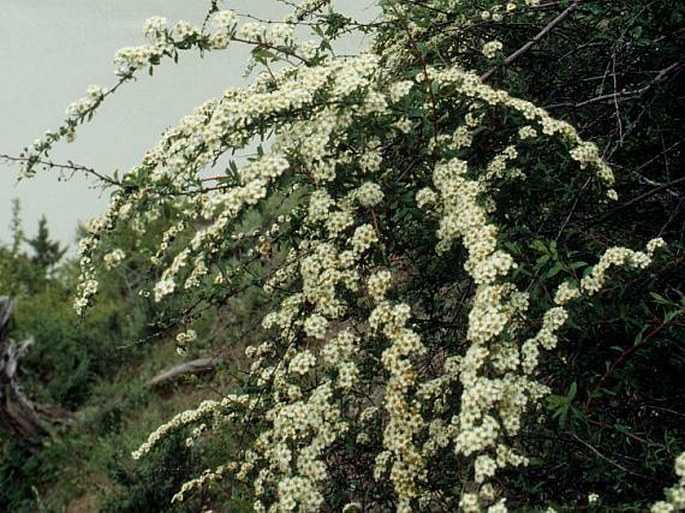
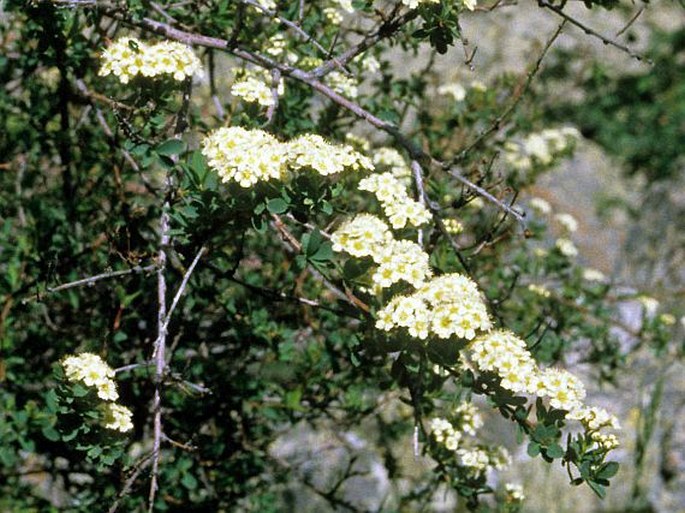
These images were taken in Kyrgyzstan, Tian Shan, Kyrgyz Ala-Too Range (1988); China, Rawu in southeastern Xizang (1992); Spiraea lasiocarpa var. villosa, China, at the type locality near Dawu in western Sichuan (1992).


